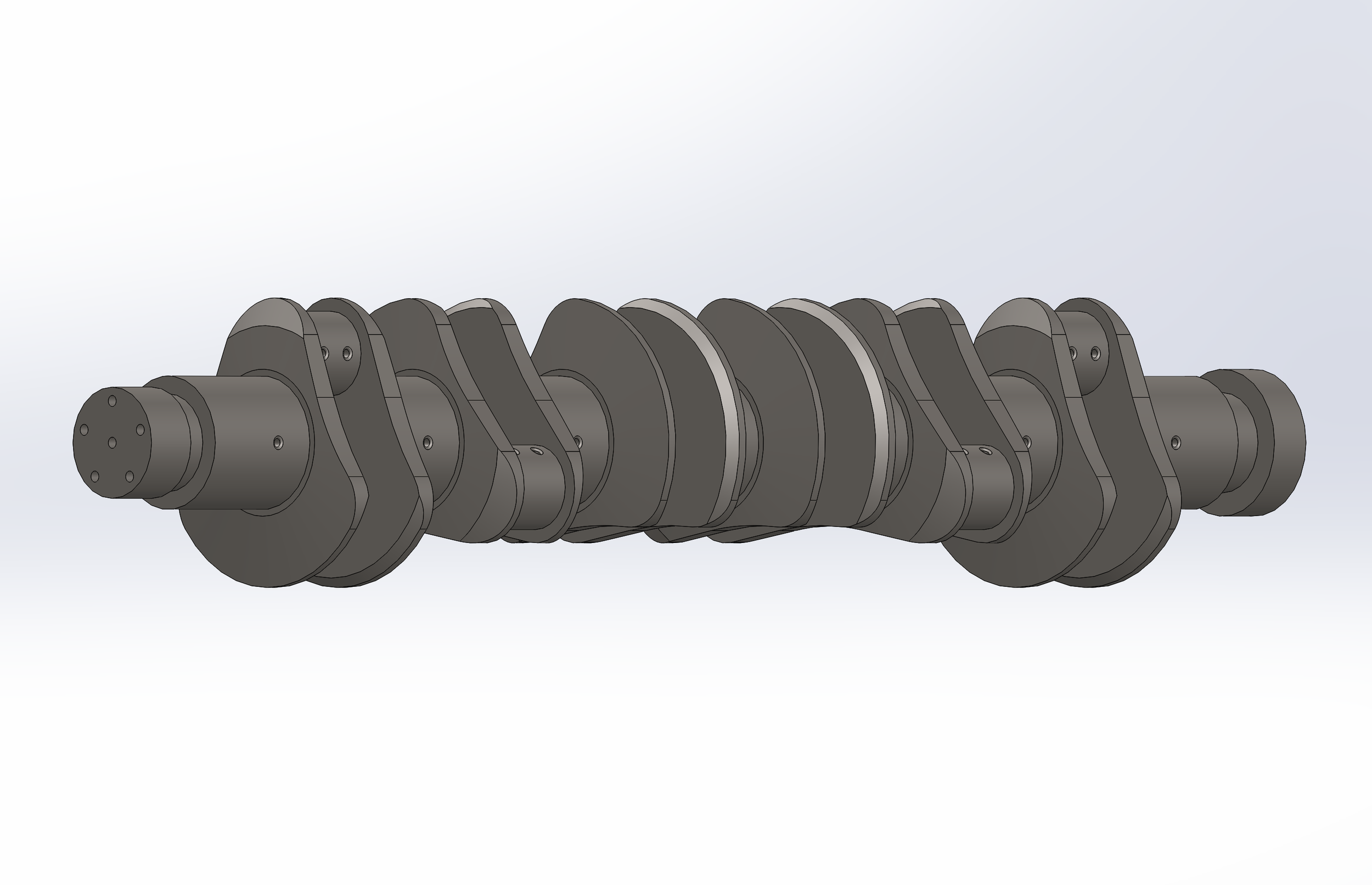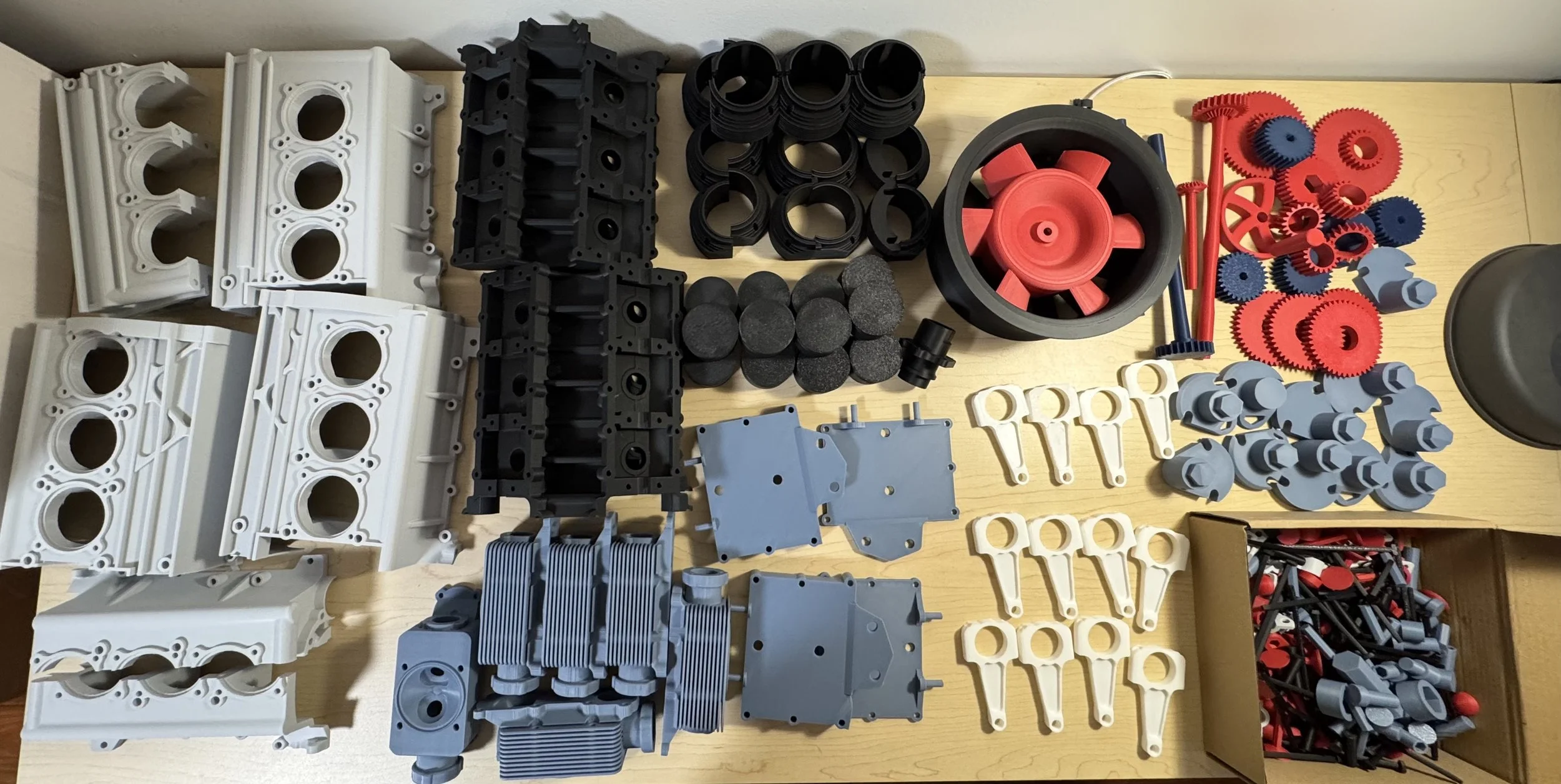Internal Combustion Engine Design Study
My passion for the automotive industry and mechanical systems inspired me to undertake this personal project focused on the Internal Combustion Engine (ICE), the heart of performance vehicles. The ICE is one of the most complex yet elegant mechanical systems ever engineered, perfectly blending precision, motion, and power. Through this project, I set out to deepen my understanding of its design and operation by creating a detailed 3D CAD model, conducting stress and thermal analyses, and fabricating a working 3D-printed engine model.
The engine model was fully designed in SOLIDWORKS, featuring a highly detailed supercharged 12-cylinder configuration. The goal of this stage was to capture the complexity and precision of an internal combustion engine while accurately representing all major mechanical assemblies. The model includes essential components such as the cylinder block, piston assemblies, crankshaft, camshaft, supercharger blower, spark plugs, and both intake and exhaust manifolds. Each part was carefully dimensioned and aligned to replicate realistic mechanical motion and assembly constraints. Special attention was given to ensuring accurate fit, internal clearances, and smooth interaction between moving components, creating a lifelike representation of one of the most sophisticated systems in automotive engineering.
CAD Design and Modelling

Complete Engine Assembly

Cylinder Block Assembly

Supercharger Assembly

Cylinder Head Assembly

Piston Assembly

Spark Plug

Intake Manifold

Crankshaft
Finite Element Analysis (FEA)
To evaluate the performance and durability of key engine components, Finite Element Analysis (FEA) was conducted using ANSYS Structural and ANSYS Transient Thermal. The piston was selected for detailed analysis, as it experiences extreme mechanical and thermal loads during engine operation. Using ANSYS Structural, total deformation, equivalent elastic strain, and equivalent (Von Mises) stress were analyzed to understand how the piston responds under combustion pressure. In parallel, ANSYS Transient Thermal simulations were performed to study the time-dependent temperature distribution within the piston. These analyses are critical in engine design, as they reveal potential failure regions, guide material selection, and help ensure optimal performance, reliability, and longevity under real operating conditions.
3D Printing and Prototyping
To bring my engine study to life, I 3D printed a detailed replica of the Porsche 917 Flat-12 engine, an icon of performance and precision engineering. Printed on a Bambu Lab A1 over more than 200 hours, the model captured intricate internal geometries and moving components with remarkable accuracy. This project allowed me to visualize the inner workings of an engine, refine my 3D printing skills, and appreciate how digital design translates into tangible engineering through rapid prototyping and functional testing.





